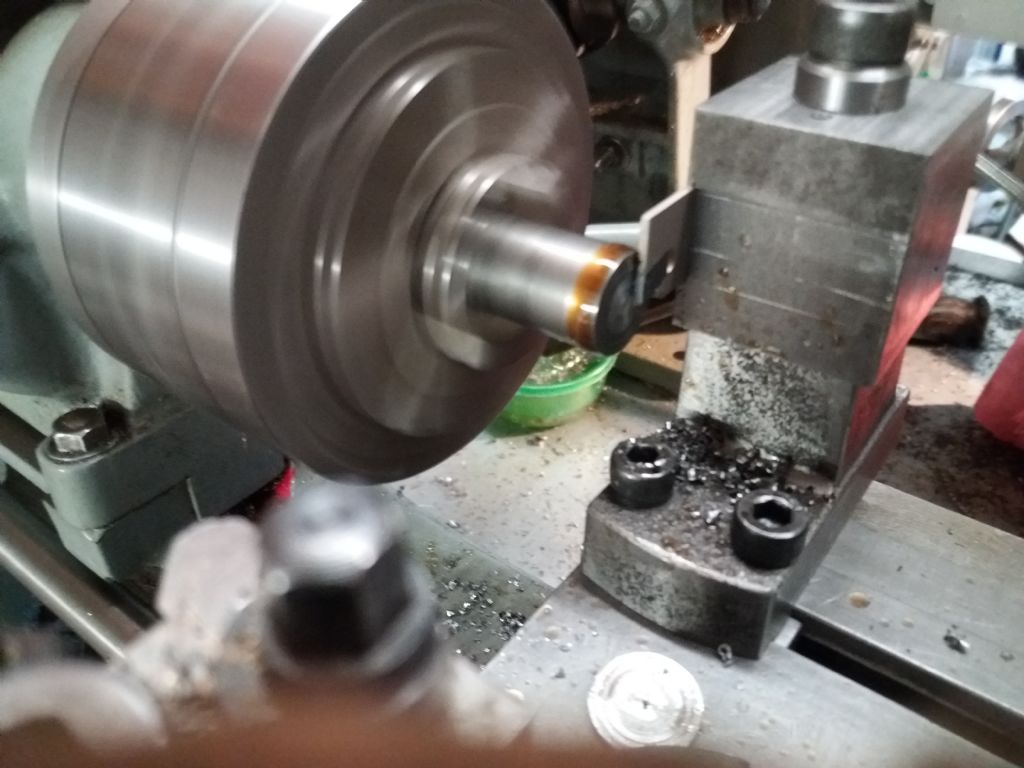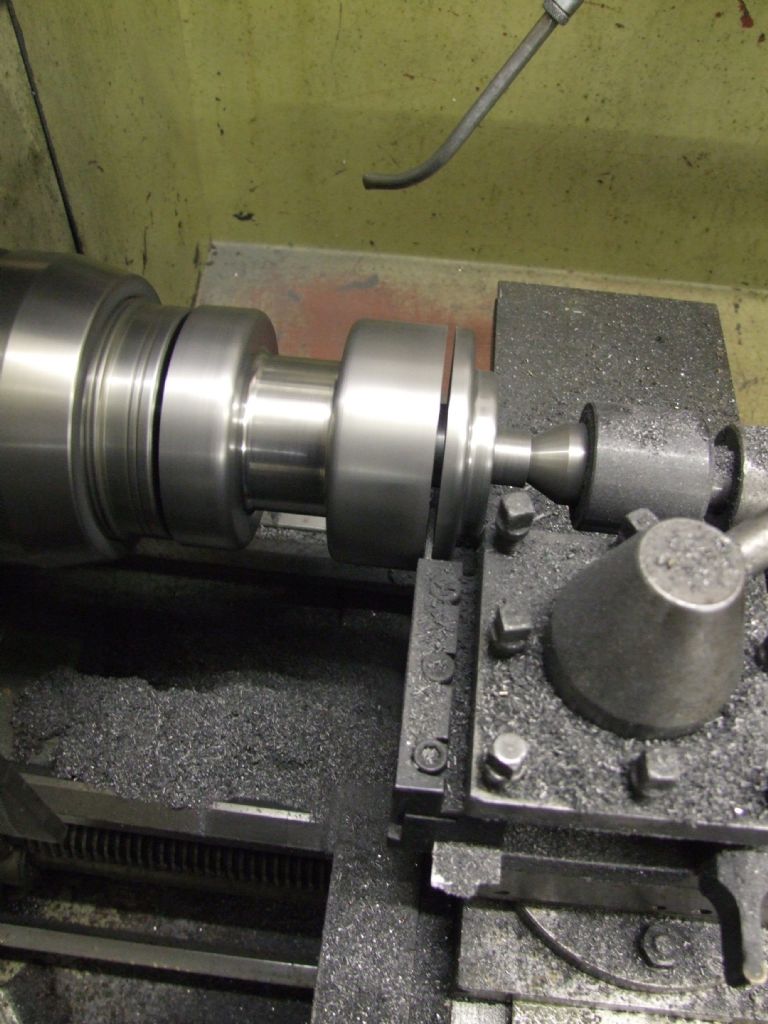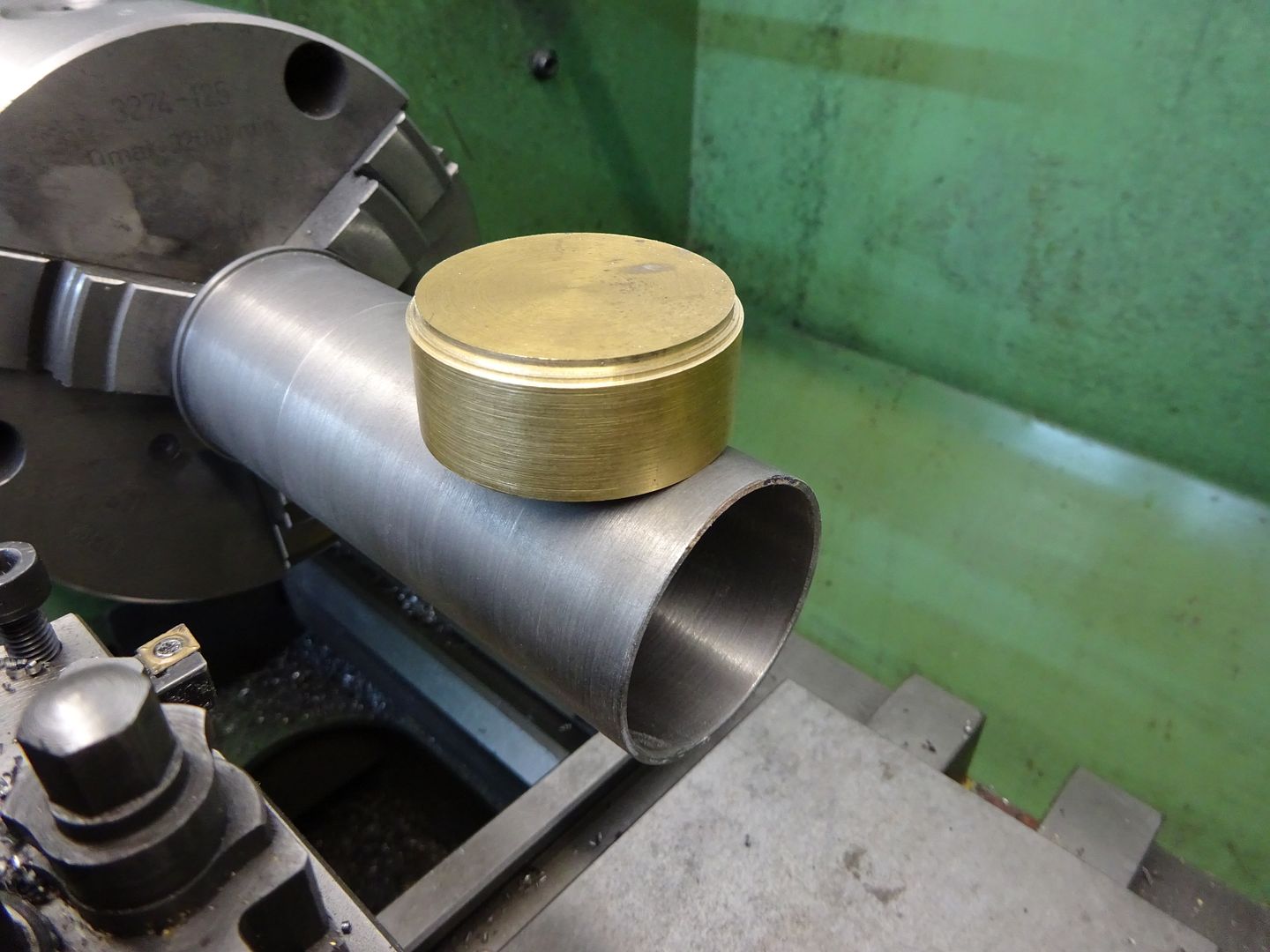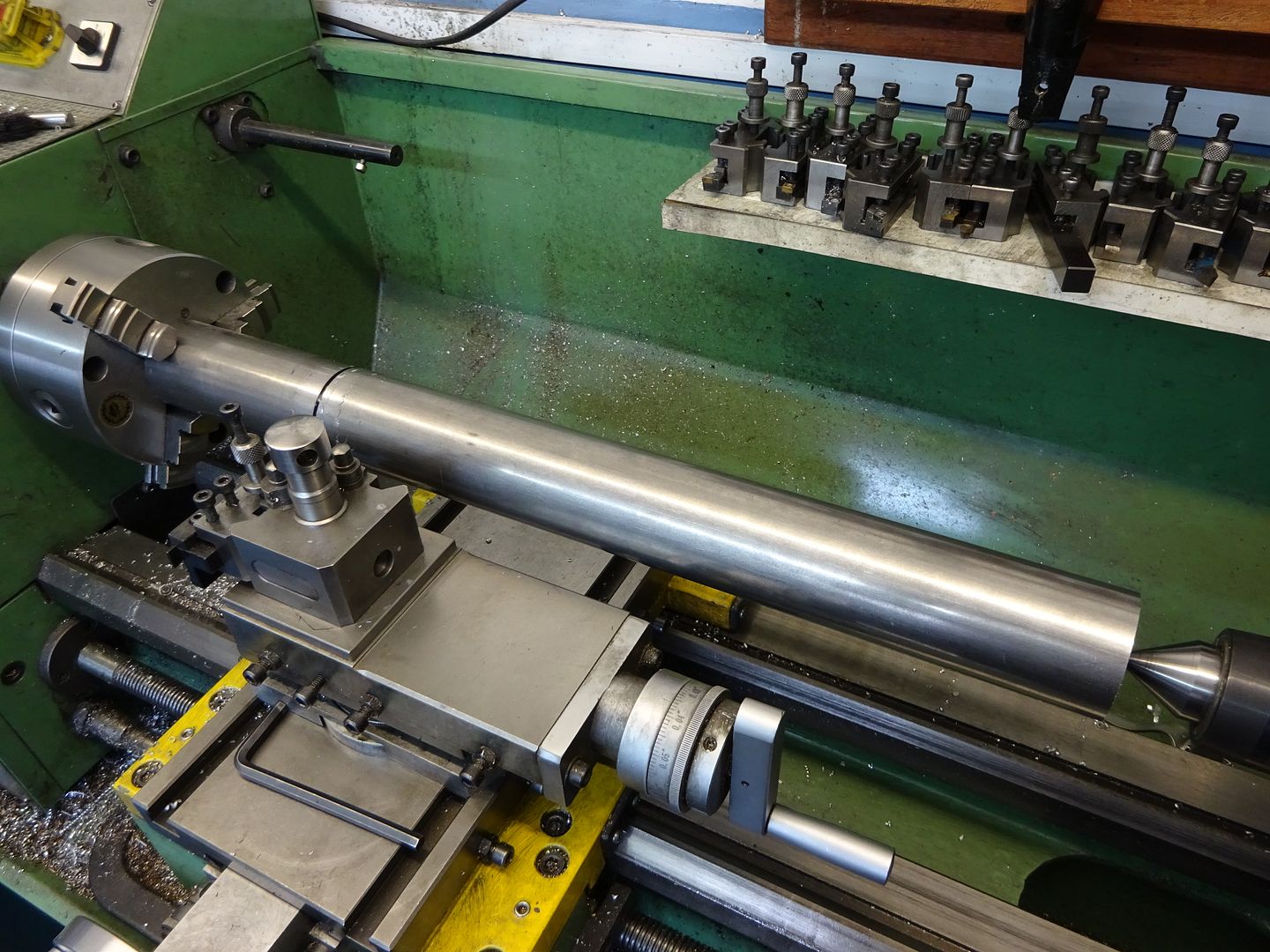Maurits, take heart, you're not alone. Parting, or even 'normal' turning with a tool with a large nose radius causes folk a lot of problems on small lathes. Essentially, it boils down to the desired relationship of the tool's tip and the work piece being disrupted, either by unwanted movement, or unintended forces.
Myfords are relatively flexible, especially if using the topslide, and, as has been said, free movement of workpiece may be caused by worn mandrel bearings, or free movement of the tool may be the result of slop in the feedscrew nut or the feedscrew's thrust bearing, which is awkward to adjust nicely.
In another thread, I asked why some early lathe-use books (and not so early: it's included in South Bend's 'How to Run a Lathe' advocated setting the tool above centre height. As machines have improved, this advice has disappeared, but it shouldn't be forgotten. I'll now answer my question…
advocated setting the tool above centre height. As machines have improved, this advice has disappeared, but it shouldn't be forgotten. I'll now answer my question…
A properly set up cutting tool experiences three forces: 1. force of feeding, towards tailstock; 2. away from the workpiece, pushing the tool out of cut; 3. tangentally downwards. This last force is by far the largest. It will try to bend the tool's support, and this will result in the tool cutting deeper – an unstable condition that will end in tears.
It is important for there to be a force pushing the tool away from the work, because this takes up the feedscrew's two backlashes. The direction of force 3 (and therefore its horizontal radial component) is the major determinant of whether this occurs or not. If there is any inwards component of this force, the tool will get 'sucked in'. The idea of setting the tool on centre height (apart from avoiding facing pips) is to ensure this force is vertically downwards. If the tool is below centre height, the tangential force swings round, so there is an inwards component, trying to pull the tool inwards, deeper into cut. Of course, flexibility in the machine allows the tool tip to be deflected downwards, so it's all rather difficult to achieve theoretically correct conditions, all the time (ever?). Avoiding this is the justification of rear tool posts, with inverted tools: they deflect upweards and swing out of cut – a stable condition.
The idea of setting the tool tip above centre height (tangent point about 5 degrees rotated clockwise, as viewed from tailstock), is to direct the tangential force 3 so that there is an assured outwards component, hopefully keeping the tool pushed outwards. Also, of course, it allows for downwards deflection of the tool.
Beware of tools being below centre height. This is an unstable condition. At first sight, it looks attractive: a 'scraping cut' has to be safer than a 'proper' cut, doesn't it? Well, no! Emphatically no!
Howard Lewis.


 advocated setting the tool above centre height. As machines have improved, this advice has disappeared, but it shouldn't be forgotten. I'll now answer my question…
advocated setting the tool above centre height. As machines have improved, this advice has disappeared, but it shouldn't be forgotten. I'll now answer my question…






